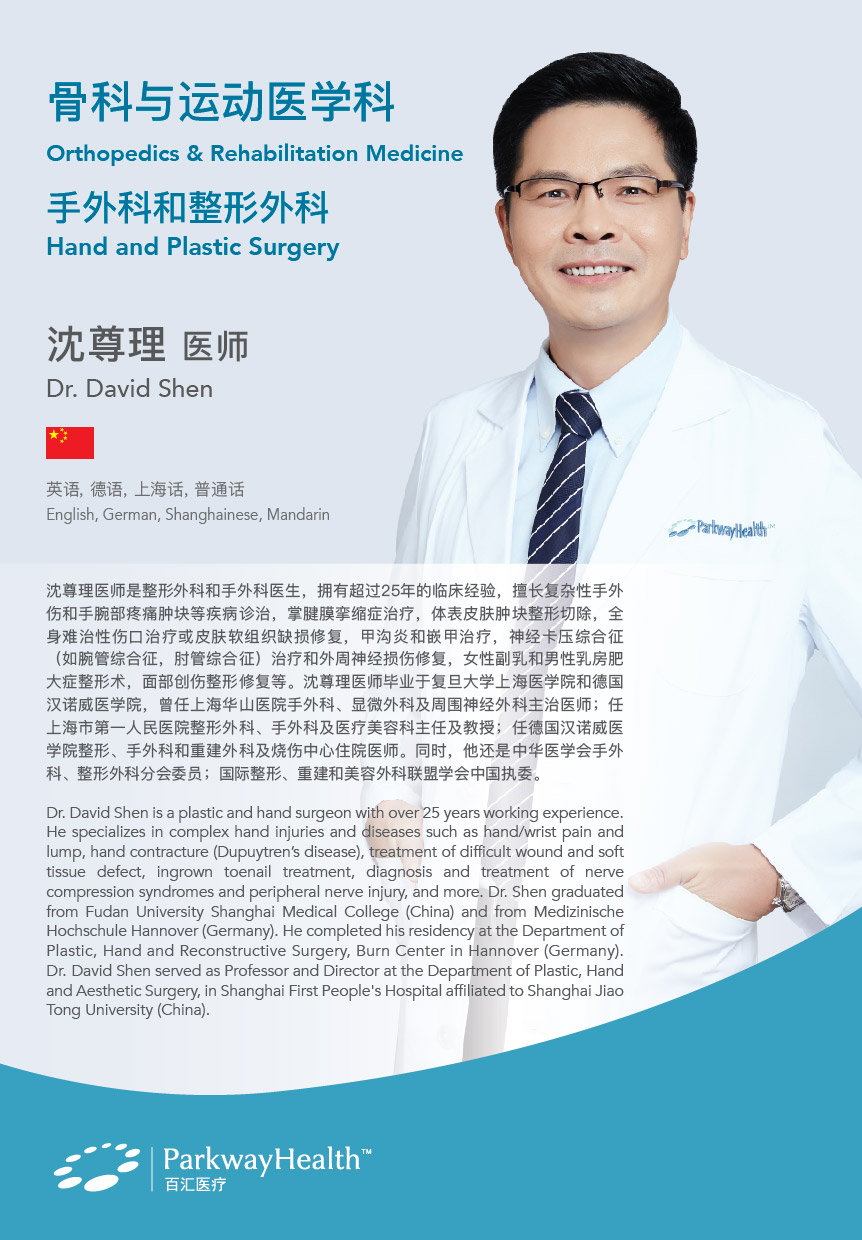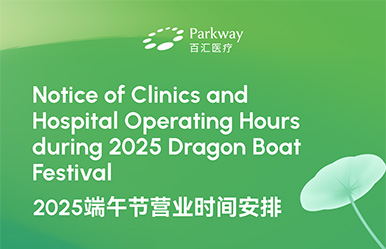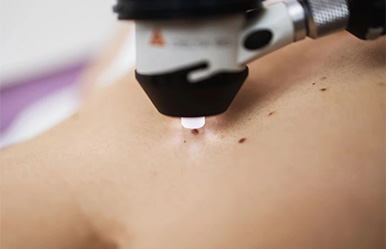What is De Quervain's Syndrome?
2020-12-23

Suffering from pain in your thumb or wrist?
Dr. David Shen, Hand Surgeon, explains De Quervain’s syndrome.
De Quervain's syndrome is an inflammation of the tendons that join your thumb and wrist. Pain in the thumb side of the wrist is the primary symptom, as this is where the tendons pass through a constrictive tunnel known in medical terms as the first dorsal extensor compartment.
With De Quervain’s syndrome, you may experience pain during activities that require the use of your thumb or wrist, e.g. lifting your baby, holding a tray, turning doorknobs, pinching something or turning keys.
If you're concerned you may have this condition, speak to a specialist.
How is De Quervain’s syndrome diagnosed?

Often, patients with De Quervain’s have a classic history of work-related overuse, or experience increasing pain while nursing a newborn in the first few months after delivery.
To diagnose the condition, your doctor will first perform a Finklestein's test, where you grip your thumb in your palm and turn your wrist in the direction of your little finger, to determine where the pain is located. They will also check for tenderness or an inflammatory nodule or lump.
Occasionally, your doctor may perform X-rays and blood tests to rule out other causes of joint pain in the thumb region, such as osteoarthritis, which may present with similar symptoms.
Who gets De Quervain’s syndrome and what causes it?
Anyone can develop De Quervain's syndrome, but certain people are more at risk. Young mothers who have recently delivered their baby and are busy with childcare tasks, such as carrying the baby and nursing, may find that constantly lifting their baby as well as the hormonal changes around pregnancy cause sore or inflamed tendons. This situation is often referred to as ‘mummy thumb’.
You may also develop De Quervain's if your job requires repetitive lifting using your wrists, eg. if you are a waiter using trays, or a construction worker using certain kinds of tools.
What happens if De Quervain’s syndrome is left untreated? Will it go away on its own?
If left untreated, De Quervain’s may cause pain and swelling to get progressively worse, resulting in stiffness around the thumb and wrist. This can cause significant disability and affect the performance of everyday tasks.
Your doctor will treat the condition with a specific kind of brace or splint to immobilize the thumb and rest the inflamed tendons, helping to prevent further aggravation. A short course of oral anti-inflammatory medications may also help. Sometimes, local corticosteroid injection will be particularly effective in relative acute cases.
More rarely, surgery may be required to release the tight tendon compartment and relieve the sensation of pressure in the wrist.
If you experience persistent pain or increasing difficulty performing daily tasks, or your symptoms recur frequently, consult your doctor. Diagnosed early, medical treatment for this condition is often simple and highly effective, allowing you to return to normal life very quickly.
How long does it take to recover if De Quervain’s requires surgery?
De Quervain's surgery is normally performed as a day surgery procedure, with the healing process taking up to 2 weeks. This usually results in very rapid if not immediate relief of the pain and stiffness. Many individuals will begin to use their hands for simple daily activities immediately after surgery, but heavier lifting tasks may take longer and should not be attempted until you feel comfortable.
You will normally be given a splint in the immediate post-operative period for your comfort.
With this surgery, it is unlikely your De Quervain’s will return.
How to prevent De Quervain’s syndrome
• To avoid pressure on your tendons, use proper posture and carrying technique
• Identify and avoid repetitive aggravating activities
• Take frequent breaks during repetitive tasks
If you have concerns about your hand and wrist pains, don't be afraid to speak to a specialist. For more information or to make an appointment please contact our Appointment Service Center at 400 819 6622.
Article reviewed by Dr. David Shen, Hand & Plastic Surgeon at ParkwayHealth

Copyright: Health Plus an online health and wellness web resource developed by Parkway Singapore





























